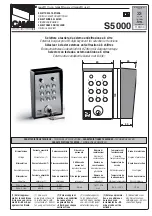
FXAlg #154: Flanger 1 ¥ FXAlg #155: Flanger 2
Algorithm Reference-57
Flanging was originally created by summing the outputs of two un-locked tape machines while varying their sync
by pressing a hand on the outside edge of one reelÑthus the name Òreel-flangingÓ. The key to achieving the
flanging effect is the summing of a signal with a time-displaced replica of itself.
The result is a series of notches in the frequency spectrum. These notches are equally spaced in (linear) frequency
at multiples whose wavelengths are equal to the time delay. The result is generally referred to as a comb filter (the
name arising from the resemblance of the spectrum to a comb). If the levels of the signals being added or subtracted
are the same, the notches will be of infinite depth (in dB) and the peaks will be up 6 dB. Flanging is achieved by
time-varying the delay length, thus changing the frequencies of the notches. The shorter the delay time, the greater
the notch separation. This delay time variation imparts a sense of motion to the sound. Typically the delay times are
on the order of 0-5 ms. Longer times begin to get into the realm of chorusing, where the ear begins to perceive the
audio output as nearly two distinct signals, but with a variable time displacement.
Comb Filters - Solid Line for Addition, Dashed Line for Subtraction
The heart of the flanger implemented here is a multi-tap delay line. You can set the level of each tap as a percentage
of the input level, and the level may be negative (phase-inverted). One tap is a simple static delay over which you
can control the length of delay (from the input tap). Four of the taps can have their lengths modulated up and down
by a low frequency oscillator (LFO). You are given control of the rate of the LFOs, how far each LFO can sweep
through the delay line, and the relative phases of the LFOs (i.e., whether the LFO is taking the taps from the input
tap or bringing them toward it).
The flanger uses tempo units (based on the sequencer tempo or MIDI clock if you like), together with the number
of tempo beats per LFO cycle. Thus if the tempo is 120 bpm (beats per minute) and the LFO Period is set to 1 beat,
the LFOs will pass through 120 complete cycles in a minute or 2 cycles per second (2 Hz). Increasing the LFO Period
increases the period of the LFOs (slows them down). An LFO Period setting of 16 beats will take 4 measures (in 4/4
time) for a complete LFO oscillation.
10
0
10
20
Amp
(dB)
Frequency
















































